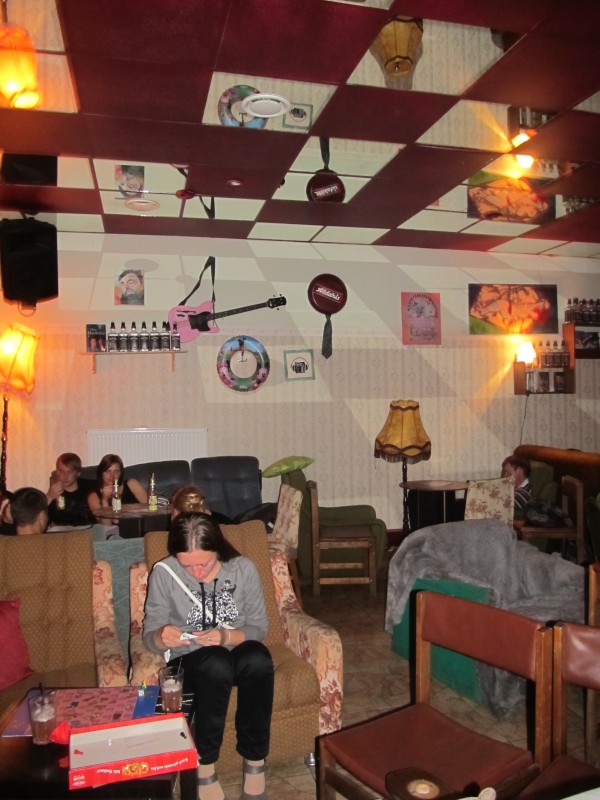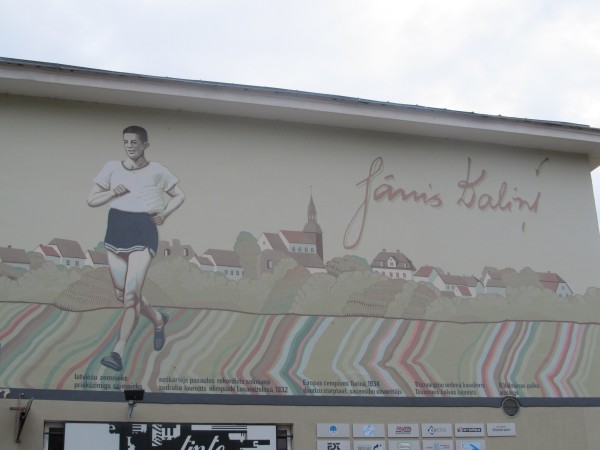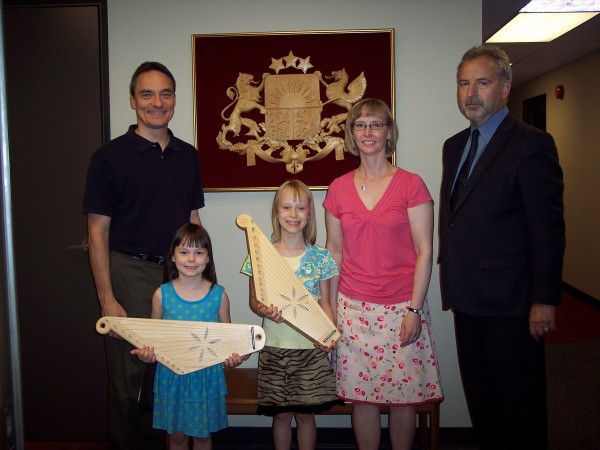
Students getting some after hours education at Ezītis Miglā. Photo: Filips Birzulis.
The words “party central” and Jelgava are not often used in the same sentence. But this is unfair to the capital of Zemgale, because behind its gritty façade, the place has lots of ways to get an awfully sore head the next morning.
Thanks to the University of Agriculture, Jelgava has a large population of students, who like the species everywhere subsist on cheap booze and pot… noodles. And because these bright scholars go home to the farm on weekends, their big night out is Wednesday.
The first port of call on a typical midweek evening is Ezītis Miglā, the southern branch of the alternative club in Old Riga of the same name. Jelgava’s “Hedgehog in the Fog” is obscurely located next to a curtain shop in the middle of the town bus station, so there’s absolutely no excuse for driving home drunk. When they’re not asleep in the worn out couches, the shaggy patrons are a friendly bunch and the collection of bras hanging over the bar suggests relations may get even warmer later on.
If you thought a dive couldn’t get any skankier than Ezītis, wait until you hit Melno Cepurīšu Balerija. “Black Cap Bar/Gallery” was originally funded by the EU as a youth centre, but it’s hard to see where the Brussels money was spent. The furnishings appear to have come from the same second hand store as the patrons’ anoraks, and the graffiti “art” on the walls would not disgrace itself on a railway bridge. Still, the beer is cheap, the wi-fi is free and guest bands play everything from death metal to reggae.
A slightly classier breed of youngster can be found at Tami-Tami. Set in Jelgava’s student dormitory district, the bright lighting and posters of smiley faced 1950’s-style squares make a stark contrast to the decaying apartment blocks nearby. The filling pizzas and prompt service draw respectable locals as well as students, and when Latvia is playing hockey on TV you can barely squeeze in. Upstairs from Tami-Tami is Jelgavas Krekli, the Jelgava outpost of the veteran Riga music venue Četri Balti Krekli. Krekli opens at 10 PM on Wednesdays and patrons go epileptic to deafening Latvian pop until sunup. During our visit, the place was overrun by students holding a “doctors and nurses” party, checking newcomers over with stethoscopes and prescribing glasses of carrot juice. Who said staying up late was unhealthy?
For an alternative place to dance ‘til dawn, head towards Jelgava Market. In addition to babushkas haggling over potatoes, this neighbourhood is home to Tonuss, the elder statesman of Jelgava nightspots. Housed in the former town swimming baths, the club recently celebrated its 18th birthday – a remarkable survival act given changing tastes and fluctuating economics. Snobbier locals swear they wouldn’t be seen dead at Tonuss, but come Monday morning they show up in photos on the club’s webpage… With gyrating go-go dancers, visiting Russian acts and local Latvian groups and three dance floors, there’s just too much fun to miss. Oh, and they recently added a ten-pin bowling centre.
If mangy dreadlocks and bottle blondes aren’t for you, Jelgava also has some more sophisticated venues. With Old Masters reproductions on the ceiling panels and sports on plasma screens to stare at, and karaoke on weeknights and live music on weekends to listen to, you’d have to have chronic ADHD not to have fun in Plate. Pronounced Plar-the, which means “LP record” in Latvian, the bar of the stately Hotel Jelgava attracts an engaging mix of foreigners and local barflies for cold beer and tasty pizza.
A few minutes’ walk away, the chef at Chocolate and Pepper tries to please everyone with a menu that swings from sushi and stir fry to burgers and “chicken chest in Chinese way.” And the barman must busy making over 100 different cocktails. But even if they are stretching themselves a bit thin, the place gets thumbs up for its soft lighting and subtle music, a stylish coffee-and-orange interior, and the high spirited Latvian yuppies celebrating a birthday there during our last visit. It seems that in Jelgava even folks over thirty know how to live it up.
By Philip Birzulis and Jared Grellet.

Old Masters and Jelgava barflies at Plate. Photo: Filips Birzulis

www.travelinlatvia.lv







